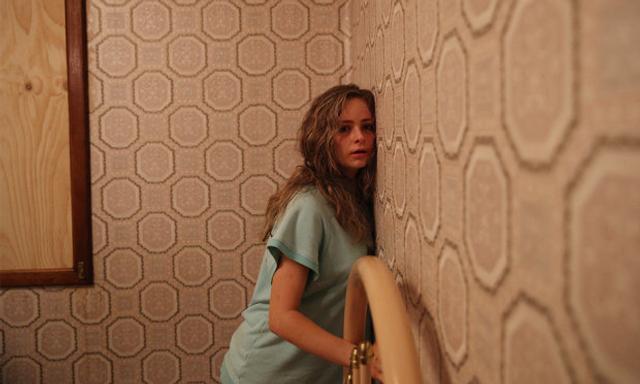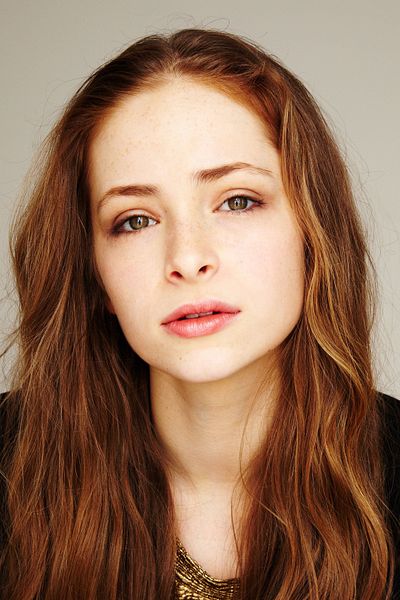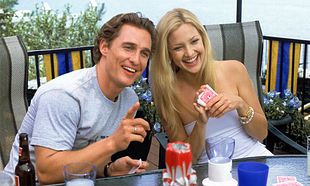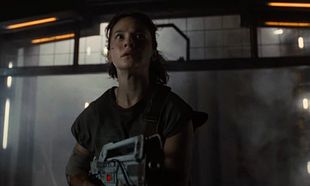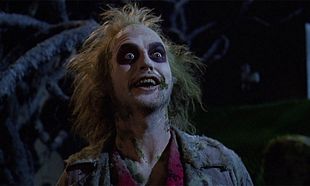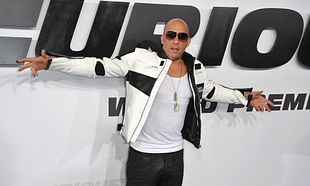Staff writer Deirdre Molumby speaks with Ben Young about his debut feature, Hounds of Love, out in Irish cinemas on July 28th. Set in suburban Perth during the mid 1980s, the film follows a serial killer couple named John (Stephen Curry) and Evelyn White (Emma Booth). Their latest victim, Vicki Maloney (Ashleigh Cummings) is determined to fight for survival.
Congratulations on Hounds of Love, Ben. It stayed with me for days after seeing it. While the film is moving, it is also quite disturbing, and I was wondering if you thought about the disturbing effect and other emotional effects the film would have on the audience?
Hounds of Love was always something that I wanted to do. It was a low budget film and since so many come out every year, I had to ask myself how is this going to be any different? So I thought it has to pack an emotional punch because as audience members, that’s what we connect with. I’ve seen films with $20 million budgets that are just soulless and that I forget the next day, and there are plenty of low budget films that have a lot of heart, soul, honest humour and emotion. They’re what are important to me, regardless of budget. So, for me, it was always going to be about the characters and the emotional pay off.
Where did the inspiration for it come from? Is it based on a particular case or was it more of an amalgamation of stories you’d heard?
My mum is a crime writer and she reads a lot for research. I was at her house one day and in the pile of books she had was one on female serial killers which I took home and read. It’s a subject you don’t hear much about in the media and it became evident to me quite quickly that women become serial killers for very different reasons than men do. I researched them more and it was in that process that I discovered couple serial killers. I found nine couples who committed serial killing together and researched all of them. The final story is kind of an amalgamation of all of them but there’s nothing in the film that happened in real life anywhere in the world, as far as I know.
I looked at the real life cases to try and understand the dynamics of the relationship between the couple and what was interesting was that they were almost all exactly the same. It was about an incredibly vulnerable woman who had never really experienced love, or had suffered emotional, physical or sexual abuse, or had very little self-worth. She meets a charming, charismatic man who builds her up and makes her feel something she hasn’t felt before so she’ll do anything to keep him. In every case, it’s about a broken woman and a charming psychopath who manipulates her.
I have to ask you next about your three leads because Emma Booth, Ashleigh Cummings and Stephen Curry are fantastic and have a fascinating triangular dynamic between them. What was the process like in casting them?
Emma Booth and I have been friends for twenty years. I used to be an actor and I played opposite her in an anti-smoking commercial in 1996 and then again in a mini-series in 2002. So we became buddies and in the meantime, I stepped away from acting to become a filmmaker. I wrote this role for her and she turned it down three times before I convinced her to do it! As for Stephen, he’s actually one of Australia’s best-known comedic actors and he was suggested by the casting director who told me that he was looking to break away from comedy and do something darker. He read Hounds of Love and was very interested in the role. I thought about films like One Hour Photo which saw Robin Williams play the villain, or more recently Steve Carrell in Foxcatcher. There’s something very interesting about casting the loveable Larkin as the baddie because audiences can’t help but like them and that makes it scarier when you see them commit these kinds of acts.
With Ashleigh, she was the lead in a great TV series called Puberty Blues and she’s fantastic in it. I thought she was one of the best young actors in Australia and used pictures of her in the director’s statement when I was trying to put together finance for the film. People thought I had cast her but I thought that at the age of 23, she was way too old for the character. Sure enough I did screen tests in Sydney and Ashleigh turned up. While she was a bit old, as the character at the time was 15, she was just so good that I adjusted and rewrote it for her.
.jpg)
What was it like bringing all three into such a dark, challenging place?
It’s not a very nice thing to have to ask people you’re working with to do horrible things, so we kept a very open line of communication. I said to everyone, it’s all about trust. I’d get the three in a room and emphasise that the most important thing is to remember that we’re making a movie and it’s not worth damaging ourselves in the process, so if there’s anything in the script anyone was uncomfortable is, to let me know. We can talk about it, I can explain why this part is in the script, and we can come up with a way of communicating that same point without putting you in a position where you feel you’d damage yourself.
So we did that, and there were a couple of things moved around to accommodate people. We had a code word, I think it was ‘orange’, for if the actors ever felt uncomfortable in a situation to the point where they wanted to stop filming, but no one ever used it. Still, it was important to have that safety net and open line of communication.
With you yourself being from Australia, and the film being set in 1980s Australia, how important was it for you that the film be identified as Australian?
For me, it was actually more important that it be identified as a west Australian movie, because in Australia the bulk of filming occurs in Perth and often west Australians are not taken seriously. So I decided from the beginning that I wanted to make the film entirely in west, urban Australia and the crew was 100% west Australians. To me, it was important to try to show Australia, and even the world I guess, that films can be made in west Australia by west Australian people.
While we’re on the subject of identity, I was thinking about this film in terms of genre because it’s not really a horror, though it has moments of horror in it. Elsewhere, I read it being identified as a crime drama. Is genre something you think about as a filmmaker or is it a term you’d rather avoid?
I don’t mind, I’m making a genre film at the moment actually. When we were making Hounds of Love, I never really thought we were making a horror and it’s been really interesting to see all these horror websites talking about and reviewing it, referring to it as a horror. It’s also been marketed in several places as a horror. I’m not sure why that is. I thought I was making a psychological thriller. Most psychological thrillers do involve crime, but then again most films involve crime, because that’s a big source for drama. So I never thought the film would be considered as a crime film.
As a consumer of cinema, the stuff I’ve generally liked to seek out is thrillers but I’ve been really disappointed in the last few years. I’ve either found thrillers to be boring or they use violence for thrills, like gornography. I just wasn’t satisfied with what was available to me in that genre. The 90s had so many fantastic thrillers like Silence of the Lambs, and they were all intelligent and about characters. In the last ten years, all I can really remember are Prisoners, which was fantastic, and Zodiac, a really good one as well, but there aren’t many genuinely thrilling thrillers. I wanted to make the kind of movie that I wanted to watch.

Were there any particular films or directors you were inspired by in making Hounds of Love?
Not really. That’s an interesting question because when I wrote it, I had such a clear idea of what I wanted it to be, but when I brought it to heads of department, they were asking what movies they should be watching. I didn’t know. Justin Kurzel made a fantastic film called Snowtown which I referenced for performances, because I wanted them to be that real, and The Shining was a reference for tone and style. Monster was an inspiration for Emma’s look but I suppose Hounds of Love mostly comes from just a lifetime of watching films which have become ingrained in my head.
What are your own favourite films?
That’s so easy for me. I think when you get asked that question, people always come up with some obscure foreign film that they’re really proud of saying is their favourite, but I’ve come up with my own formula for answering that question. Your favourite film has to be the one that you’ve watched the most, right? So when you put it like that, the four films that I’ve watched the most are The Princess Bride, Fargo, Raiders of the Lost Ark and Star Wars: A New Hope.
What’s next for you?
I just spent five months in Belgrade, Serbia, shooting a science fiction film [called Extinction] for Universal Pictures and Mandeville Films, and landed in LA two weeks ago to start post production on that. That comes out in January of next year. It’s been very, very wild. It’s written by Spenser Cohen and Brad Kane, and Brad was the singing voice of Aladdin in the Disney film which is funny! I didn’t even know that after working with him for months. The film is very different to Hounds of Love but it’s been a huge learning curve and a very rewarding process.
Is it Hollywood all the way now or do you think you’ll try to stick to your Australian roots, or find some balance between the two?
I don’t actually know. I just want to make movies that I want to see in the cinema and I’ve got plenty of more ideas in my head that I’d like to write. They’re small in scale and whether I do them in Australia or the US is completely up for debate. I’m obviously Australian and I’ve come up with ideas that I would like to do here but in a way it’s so much harder because I don’t know the geography, the weather, the plants, or the lifestyle. Because I am Australian, I think I’m always going to be kind of drawn to tell Australian stories.
This interview has been condensed and edited.
For the full audio version, see below:
